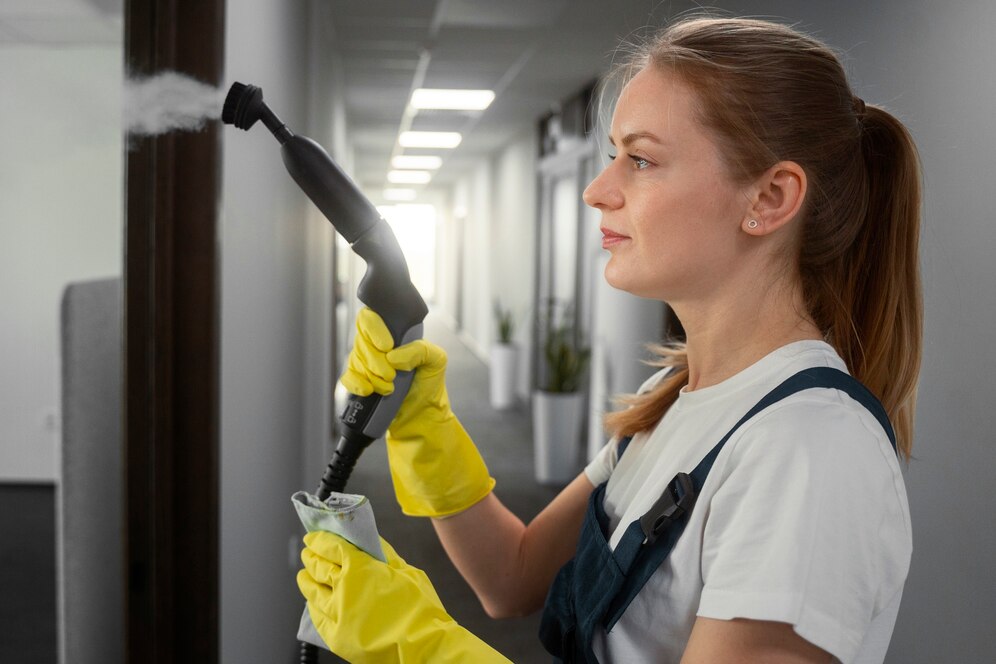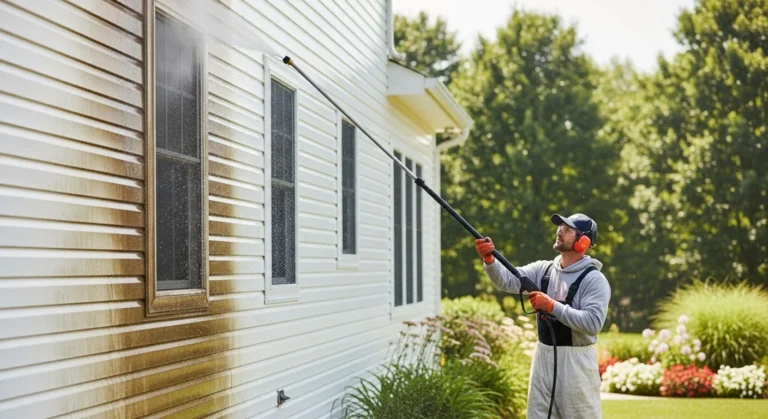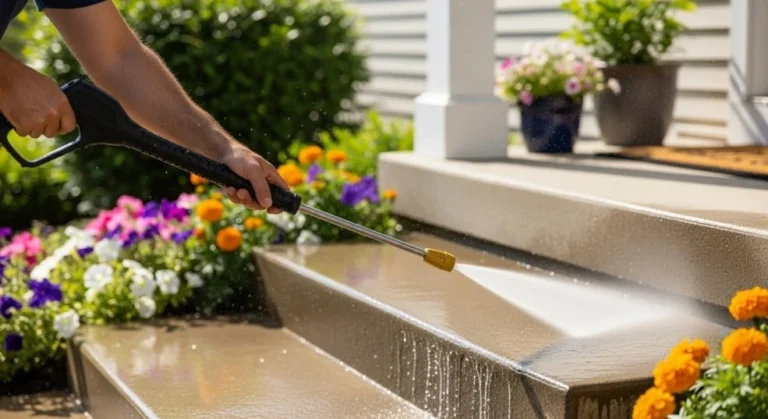Allergies are a problem beyond annoying- they can disturb daily life. Allergic reactions like sneezing, having itchy eyes, and trouble breathing can make life tough for those sensitive to mold and pollen. While people take medication or air purifiers to manage their allergies, there is a solution sitting right outside, which most people ignore soft washing. Soft washing is a cleaning method used to remove mold, pollen, and allergens from the outer parts of a building, which is helpful for allergy patients. But how soft washing helps allergy sufferers: remove mold & pollen? Let’s have a look.
How Soft Washing Helps Allergy Sufferers: Remove Mold & Pollen

What Is Soft Washing?
Soft washing is a cleansing technique that uses low water pressure. It consists of a water compound and a biodegradable detergent. This technique is effective on roofs, fences, decks, and siding. Soft washing differs from traditional pressure washing because it uses a gentler approach while still getting the job done. This technique works well when removing mold, mildew, algae, and pollen from surfaces.
This method clears away buildups and stains without just rinsing them away. Instead, soft washing breaks down these organic materials at their source. This technique ensures that the materials will not return to the surface anytime soon. A big advantage for allergy sufferers is that the removal of mold spores and pollen improves the environment.
How Mold and Pollen Affect Allergy Sufferers
Mold and pollen are among the most common allergens worldwide. Mold grows in damp and shady places and typically forms on roofs, walls, and patios. When disturbed, mold produces spores that can be inhaled into the air. This triggers allergic reactions, including nasal congestion, coughing, rashes on the skin, and even asthma attacks in the worst cases.
Pollen, on the other hand, is a seasonal problem, especially during spring and late summer. Trees, grasses, and weeds produce it, and it can settle on outer surfaces like window sills, decks, or driveways. Sneezing, watery eyes, and a runny nose are common symptoms of pollen allergies. This can be exacerbated for people who spend much time outdoors, where pollen settling around the home becomes a constant issue. Soft washing is a good approach for removing these allergens from outdoor surfaces.
The Benefits of Soft Washing for Allergy Sufferers
For allergy sufferers, soft washing presents several clear advantages. This process directly addresses the sources of outdoor allergens, allowing the individual to breathe without issues. Long-term accumulation of surfaces such as roofs, fences, and patios not solely impairs aesthetics but also severely lowers the quality of air available, especially during wind or daily activities. Soft washing improves the home environment and reduces the risk of allergen exposure by eliminating these contaminants.
Another strong point is soft washing’s ability to remove dirt from hard-to-reach places. Mold and pollen microbes and their particles are rarely visible and can always be found stuck to shaded corners or roof shingles. Unlike traditional methods, microscopic soft washing penetrates these regions, ensuring that a thorough cleaning has been achieved. This translates to fewer symptoms and improved overall comfort in the house for allergy sufferers.
Why Soft Washing Is Better Than Pressure Washing
Cleaning outdoor surfaces using pressure washing techniques can appeal to many people. However, it’s not the best option for those who suffer from allergies or care for cleanliness in the long term. Soft washing is undoubtedly the better option. Pressure washing is based on water force alone and uses no cleaning agents. As a result, allergens like mold and pollen will not be washed away thoroughly. Such particles are often displaced temporarily instead of removed, allowing them to return quickly.
Also, wood and shingles are sensitive to pressure washing and can be destroyed by the pressure intensity. These methods also slowly hamper the structure by creating cracks and crevices that encourage mold growth. Soft washing will prevent these issues. It works best for wood and other structures, as it removes aggression from the equation and adds to washing cleaning agents that neutralize allergens, resulting in a safer and more effective clean.
Choosing a Professional Soft Washing Service
Softer surfaces like roofs can accumulate dirt and grime, which can lead to more costly repairs if unattended. This is where hiring a pro to soft-clean your home will prove beneficial. Trained professionals come with the required tools and cleaning materials for each unique surface. Your home will be cleaned properly and without any damage, unlike with self-wash sifters.
When looking for a soft cleaner service, ensure you find one that uses green, biodegradable cleaners. This is beneficial for the environment and prevents any risk of your home’s environment becoming compromised. You can also gain a lot of useful information by looking through customer testimonials or asking how they go about the process.
Conclusion
Whether large or small, accomplishing a step towards making allergens accessible can assist allergy sufferers in their daily activities. Soft washing provides immense help in removing problematic mold, pollen, and other organic materials that surface on the exterior of your home. Ensuring a clean outdoor environment helps improve air quality, allergy symptoms, and overall comfort indoors.
If you’ve seen mold streaks on your roof or a yellow pollen layer over your deck, it’s probably time to start looking for someone who does professional soft washing. Not only does it boost the curb appeal of the house, but it also improves the well-being of the occupants. With the investment in soft washing services today, you can take another step towards an improved home environment. Removing allergens from their source allows people to enjoy their outdoor space without worrying about allergies.


